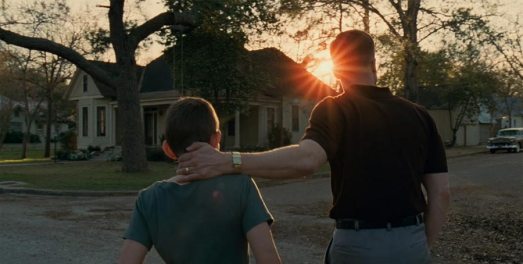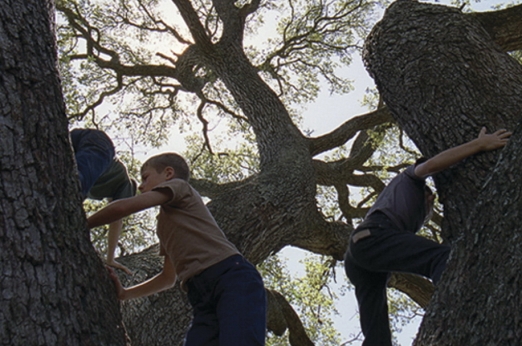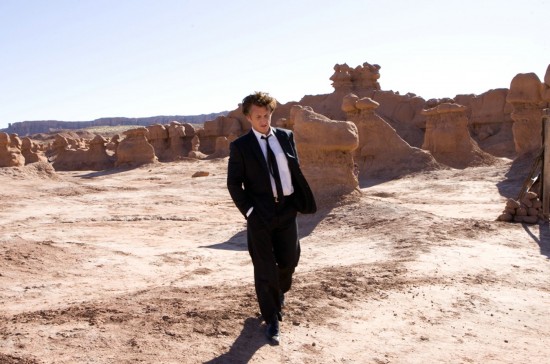
If there was any film in 2011 that deserved revisiting, it was “The Tree of Life.” It may have been polarizing, but in a year of some great and some mediocre films, it stood as far and away the most important film of the year.
And what’s more, it took watching it twice to realize it’s a masterpiece.
When I originally reviewed the film, I was caught in a state of perplexed awe. I called the film a purely cinematic ode to life itself, but remained unclear of the symbolism and without a feeling of emotional levity.
And yet “The Tree of Life” is so much more than just an ode to life. Watching “The Tree of Life” resembles the feeling one might experience after a rough mid-life crisis: a feeling of peace, acceptance and embracement of life’s beauty.
Terrence Malick’s film is averse to the bitterness, negativity and cynicism that motivate us to search for unanswerable questions in life. Instead, it is a constantly beautiful film that views the color and frivolity of life existing all around us.
When I say “The Tree of Life” is a constantly beautiful film, I am not praising the technical precision of Emmanuel Lubezki’s impossibly hard and breathtaking cinematography.
Malick does not allow a single frame of his movie to look ugly, bleak, cold or washed out. There are few if any harrowing, dark or devastating images in “The Tree of Life” compared to the way there are in the equally gorgeous “Melancholia.”
If the glowing horizon is not visible in a given shot, sunlight will beam in from unnatural places and beaconing passageways in perfect symmetry will fill the frame. This is Malick’s way of saying that the beauty of life is always right there in front of us.
There is even endless frivolity throughout “The Tree of Life.” I myself compared this stately film to “2001: A Space Odyssey,” but “2001” does not have the jittery handheld camera this film does. It is in constant motion as a way of illustrating all of the world’s energy. And if the camera does stay put, the frame is alive with movement, either the physical dancing or playing of children or the figurative spiraling stained glass ceiling in a church.
The movement has purpose too. Malick strongly favors the low angle shot to place objects in the foreground or background striving upwards toward the heavens. When the young Jack (Hunter McCracken) is seen praying, it’s not God looking down at him but Malick looking up to the sky and the afterlife.
In the polarizing montage detailing the birth of the universe and of life on Earth, we immediately see rising figures aiming toward an unseen afterlife. Primordial fish, jellyfish and seaweed all aim higher in a seamlessly graceful sequence of growth and evolution.
Even in dramatic moments, Malick does not sacrifice the light and color that make “The Tree of Life” look effervescent. Through careful jump cuts or deliberate sound mixing that is alternately absent and blaring, Malick is capable of weaving an emotionally complex and powerful narrative without sacrificing the film’s purely cinematic integrity.
But much has been made about some of the film’s more peculiar images, however beautiful. Malick does not have any more answers than we do, and those looking for some intricate web of answers and symbolism to a hidden narrative about the meaning of life will not find it.
The fact then that there are audiences of people who will ignore this beauty because they do not fully understand it is exactly Malick’s point. Some people will be inherently opposed to anything too majestic or sanctimonious, and yet there is no other reason to despise “The Tree of Life’s” magnificent, 16-minute, space opera montage, the sudden appearance of dinosaurs or the countless vignettes in this small Texas town.
It is the film’s pervasive narrative theme that we mustn’t let negativity and other factors sidetrack us from truly viewing the world and embracing it to its full potential. Brad Pitt’s character is the finest example of this, a father figure who has “drawn a zilch” beyond raising his children and is now at the point in his life when he can’t see the beauty around him. Bad experiences with corrupt, rich neighbors and layoffs at work have made him cynical and immune to life’s joys.
The complexity of the screenplay lies with Jack as a boy and as an adult (Sean Penn). As a boy, we see that exploring all life has to offer has a dark side as well, and the young Jack lashes out at his father, breaks into homes and vandalizes. These feelings of anger and hatred too have a sort of natural beauty, but one that contrasts with the other universal element, grace.
And as an adult, Jack’s life is misguided and plagued with the same inability to view beauty in the way his father shared. As he regains beauty and meaning upon his trip to the afterlife, it is the older Jack that learns heaven is not just a place for reunion but also a place to assign purpose to the memories that came in the life before. Knowing this, Sean Penn’s role seems absolutely essential.
In the end, Malick grounds us back on Earth. Jack seems to look around for the first time and finally looks towards the heavens.
His character overcame the negativity of life, and so have I in watching this film. All the polarizing discussion that surrounded it convinced me it was not as powerful as I recalled, and I relegated it to an honorable mention on my Best of the Year list. I’ve seen the beauty now, and it is without doubt the best film of 2011.







It definitely will take more than one watch, as I didn’t get it in the first. Not sure I’m going to give it another go though. A little bit too much like interpretive art for me. One of those where everyone has a different opinion about what a painting might be about. If it strikes a chord with someone, that’s great. I agree the film was definitely extremely beautiful, moving and breathtaking throughout. I didn’t even mind the “space opera montage” part. I just usually just need to be told a little more what I’m supposed to understand or feel than this movie provides.
Yes this movie was very beautiful and interesting to watch, but some parts of it just did not make much sense and bugged me. It did have its moments that I really liked though.